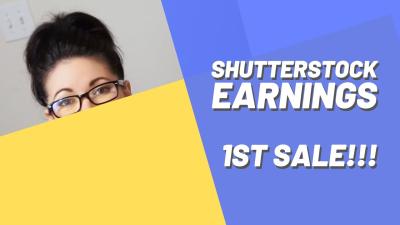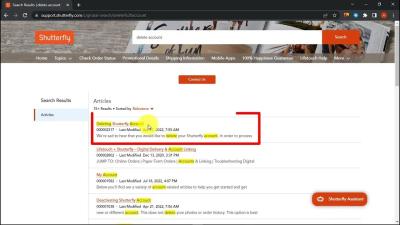If you’re working on a project with a tight budget, finding high-quality visuals without breaking the bank can be a challenge. That’s where Shutterstock comes in! Shutterstock is one of the most popular stock photo platforms, offering a vast library of images, videos, and music. The best part? They have options that are budget-friendly, making it easier for creators, small businesses, and students to access professional-grade resources without overspending. Whether you need a stunning photo for your website, a short video for your presentation, or background music for your project,
Steps to Create a Shutterstock Account and Access Resources

Getting started with Shutterstock is straightforward, even if you’re new to stock media platforms. Here’s a simple step-by-step guide to help you set up your account and start exploring their resources:
- Visit the Shutterstock Website: Head over to shutterstock.com. Take a moment to browse around and get familiar with the interface.
- Click on Sign Up: You’ll find the “Sign Up” button at the top right corner of the homepage. Click it to start creating your account.
- Choose Your Account Type: Shutterstock offers different options—personal, business, or contributor. For most budget-conscious projects, a personal account works perfectly. Select the one that suits your needs.
- Fill Out Your Details: Enter your email, create a strong password, and provide basic information like your name. You might also have options to sign up via social media accounts for quicker access.
- Verify Your Email: Check your inbox for a verification email from Shutterstock. Click the link inside to confirm your account.
- Explore Subscription Plans or On-Demand Packs: Once logged in, navigate to the pricing section. Shutterstock offers flexible options like subscriptions (which can be more economical if you need multiple assets per month) or on-demand packs for occasional use.
- Access and Download Resources: Use the search bar to find images, videos, or music relevant to your project. When you find something you like, you can purchase credits or subscribe to download it.
Pro Tip: Keep an eye out for discounts, free trials, or special offers for new users. These can significantly reduce your costs and help you get the most out of your budget.
How to Find Affordable and High-Quality Stock Images and Videos

When you’re working on a project with a tight budget, finding the right stock images and videos without breaking the bank can feel a bit overwhelming. But don’t worry—there are plenty of ways to score high-quality visuals that won’t drain your wallet. The key is knowing where to look and how to filter your options effectively.
First off, it’s important to understand that not all stock content is created equal in price. Some platforms offer free assets, but if you’re aiming for professional-grade images and videos, Shutterstock has some fantastic affordable options. Here are some tips to help you find the best bang for your buck:
- Use filters wisely: When browsing Shutterstock, apply filters like ‘Price’ to sort assets from most affordable to premium. You can also filter by orientation, color, and image type to narrow down your options quickly.
- Look for collections and bundles: Shutterstock often offers collections or bundles that include multiple related images or videos at a discounted rate. These are great when you need a consistent style across your project.
- Search for specific keywords: Be precise with your keywords to find exactly what you need. Adding terms like “budget-friendly” or “affordable” can sometimes surface content that fits your price range.
- Consider slightly lower-resolution assets: If your project doesn’t require 4K footage or ultra-high-res images, opt for lower-resolution options—they’re usually more affordable but still look great on most screens.
- Utilize free trial periods and credits: Shutterstock often offers free trials or discounted credits for new users. Take advantage of these to download quality content at a lower cost or even for free.
Another tip is to explore Shutterstock‘s Content Search and Editor’s Picks. These curated collections often feature high-quality, cost-effective images and videos that are trending or seasonally relevant. Plus, you might find some hidden gems that fit your budget perfectly.
Remember, quality doesn’t always mean expensive. With a bit of patience and strategic searching, you can find stunning visuals that elevate your project without blowing your budget. The key is to be specific, use filters effectively, and stay informed about special deals and collections offered by Shutterstock.
Understanding Shutterstock Subscription Plans and Pricing Options

If you’re serious about regularly using stock images and videos, understanding Shutterstock’s subscription plans and pricing options is essential. This knowledge helps you choose the plan that best aligns with your budget and project needs, ensuring you get the most value for every dollar spent.
Shutterstock offers a range of plans designed to cater to different types of users—from individual freelancers to large teams. Here’s a quick overview of the main options:
| Plan Type | Description | Number of Downloads | Price Range |
|---|---|---|---|
| On-Demand Packs | Buy a set number of images or videos upfront. No recurring commitment. | Varies (10, 20, 30, etc.) | Pay per pack (discounted rate) |
| Monthly Subscription | Unlimited downloads within your plan limits, billed monthly. | Number of downloads per month (e.g., 10, 30, 50) | Starting around $29/month |
| Annual Subscription | Similar to monthly but billed annually for a better rate. | Varies (e.g., 10, 20, 30 downloads/month) | Discounted compared to monthly plans |
| Team Plans | Designed for businesses with multiple users, offering centralized billing and management. | Varies based on team size and needs | Customized pricing |
So, what’s the best choice for a budget-conscious project? If you anticipate frequent use, a monthly or annual subscription usually offers the best per-image/video cost. For occasional needs, on-demand packs might be more economical—buy only what you need, when you need it.
Shutterstock also provides special discounts and promotions from time to time, especially for new subscribers or during holiday sales. Keep an eye out for these deals to maximize your savings.
Another helpful tip: consider the credit system. Instead of subscribing, you can buy credits to download assets. Credits often come with discounts when purchased in bulk, making them a flexible and cost-effective option for irregular projects.
In summary, understanding your usage pattern and the available plans can help you make an informed choice that balances quality and budget. Whether you opt for a subscription, on-demand packs, or credits, Shutterstock offers flexible options to fit different needs and keep your project costs under control.
Tips for Maximizing Your Budget When Purchasing Shutterstock Content

Let’s face it — working with a tight budget can make sourcing high-quality visuals feel like walking a tightrope. But don’t worry! With a bit of strategy, you can make your dollars stretch further and still get the stunning images, videos, and vectors you need. Here are some practical tips to help you maximize your Shutterstock budget:
1. Use Search Filters Wisely
Shutterstock offers a variety of filters that help narrow down your search. By honing in on specific image types, orientations, color schemes, and even licensing options, you can avoid sifting through hundreds of options. This saves you time and helps you find exactly what you need without overspending on unnecessary options.
2. Opt for Subscription Plans
If you’re planning to download multiple assets, subscriptions often provide better value than single-image purchases. For example, a monthly subscription might give you a set number of downloads at a lower per-image cost. Just make sure to choose a plan that aligns with your anticipated usage to avoid paying for more than you need.
3. Take Advantage of Free Resources and Promotions
Shutterstock occasionally offers free images or promotional discounts. Keep an eye on their website, subscribe to their newsletter, or follow them on social media to stay updated. Additionally, some Shutterstock plans include free images each month, which can be a great way to supplement your collection without extra cost.
4. Use Collections and Wish Lists
When you find images you like, add them to collections or wish lists. This way, you can compare options side-by-side without committing immediately. It also helps you prioritize your downloads based on your project deadlines and budget constraints.
5. Be Strategic with Licensing
Shutterstock offers different licensing options, including standard and enhanced licenses. For most typical projects, the standard license suffices. Avoid unnecessary upgrades unless your project warrants it, such as large-scale commercial use or print runs exceeding a certain quantity.
6. Consider Buying in Bulk
If you anticipate ongoing needs, bulk purchasing or enterprise plans might offer significant savings. They often come with discounted rates per image and additional perks like dedicated account managers or priority support.
7. Repurpose and Reuse Content
Think creatively about how you can reuse images across multiple projects. For example, a single background image can be used in social media graphics, presentations, and your website, maximizing your investment.
By applying these tips, you can make the most out of your Shutterstock budget without sacrificing quality. Remember, a little planning goes a long way in ensuring your visual content is both impactful and cost-effective.
Alternatives and Additional Resources for Cost-Effective Visual Content
While Shutterstock is a fantastic resource with a vast library, it’s not the only game in town, especially if you’re trying to keep costs down. Luckily, there are plenty of other options—some free, some more affordable—that can help you find beautiful visuals without breaking the bank. Let’s explore some of these alternatives and additional resources:
Free Stock Photo and Video Websites
- Unsplash: Offers a huge collection of high-resolution photos contributed by photographers worldwide. Perfect for blogs, websites, and social media.
- Pexels: Provides free stock photos and videos with a wide variety of categories. All content is free to use, even commercially.
- Pixabay: Includes photos, videos, vectors, and illustrations. All content is released under a license that allows free commercial use.
Affordable Stock Image Platforms
If Shutterstock’s prices are a bit steep, consider these budget-friendly options:
- Adobe Stock: Offers competitive pricing, especially if you already subscribe to Adobe Creative Cloud.
- iStock by Getty Images: Has a range of affordable plans, with a focus on quality and diversity.
- Depositphotos: Known for flexible plans and affordable pricing, especially for bulk downloads.
Creative Commons and Public Domain Resources
For truly free and legal content, explore Creative Commons-licensed images or public domain resources:
- Flickr Creative Commons: Search for images licensed for reuse. Make sure to check the licensing details for each image.
- Public Domain Archives: Websites like Public Domain Pictures or Wikimedia Commons host images that are free to use without restrictions.
Design Tools with Built-in Stock Libraries
Some design platforms come with integrated access to stock assets:
- Canva: Offers a library of free and paid images included in its platform, making it easy to create visuals quickly and affordably.
- Crello: Similar to Canva, with access to a variety of free and paid images that you can use in your designs.
Tips for Using Free Resources Effectively
While free resources are fantastic, it’s essential to pay attention to licensing and attribution requirements. Always double-check the license type and give credit if required. Combining free images with your original content or custom graphics can give your projects a unique touch without additional costs.
In summary, you don’t have to rely solely on Shutterstock to find quality visual content. A mix of paid and free resources, along with smart licensing choices, can help you create stunning projects on a budget. The key is knowing where to look and how to use these resources effectively.
Conclusion and Final Tips for Budget-Friendly Shutterstock Purchases
Navigating Shutterstock for your budget-conscious projects doesn’t have to be overwhelming. With strategic planning and smart choices, you can access high-quality visuals without overspending. Remember, understanding the platform’s licensing options and utilizing available discounts can significantly reduce costs. Always prioritize your project’s needs—sometimes, opting for a smaller resolution or a single image license suffices, saving you money.
Here are some final tips to make the most of your Shutterstock budget:
- Subscribe wisely: Choose a plan that aligns with your typical usage volume to avoid paying for unused downloads.
- Utilize free resources: Take advantage of Shutterstock’s free images and trial offers when available.
- Search strategically: Use specific keywords to find the most relevant and cost-effective images quickly.
- Filter by license type: Ensure you’re selecting images with the appropriate license to avoid unexpected fees.
- Stay updated on discounts: Subscribe to newsletters or follow Shutterstock on social media for promotional offers and discounts.
By applying these tips, you can efficiently incorporate stunning visuals into your projects without breaking the bank. Planning ahead and making informed choices will help you maximize your Shutterstock investment while maintaining a professional look for your content.


